I have been sitting on this thread for a few months in hopes that the muddied waters of my mind might eventually settle into some clarity of vision. Sadly, my thoughts remain as murky as ever. So I’m just going to plunge ahead anyway since I seriously doubt further procrastination will spawn any meaningful inspiration. But before I do, a little background is in order.
I was born in Oklahoma and played my first rounds of golf on a 9 hole course in Enid that can only hope to one day attain goat track status. We moved to NJ when I was about ten, before I had any idea there was anything better out there. So my experience with golf in the state of my birth was pretty much limited to places with a maintenance budget suitable for the Dollar Store. When my Mom got cancer and it became apparent she was fighting a losing battle, my Dad moved her back to Oklahoma City so she could spend her last days closer to family. He stayed after she died. That was 14 years ago. Now, I visit pretty much every year during the holidays, but never have the time for golf. So I’ve been thinking for some time that I would like to combine a visit to see my Dad with a tour of Perry Maxwell courses in the region. The only Maxwell designs I had played previously were Old Town and the old Austin Country Club course (now Riverside Golf Club). So I was anxious to get some broader exposure to his work - not just his famous designs, but those of lesser note too, with an eye toward getting a real feel of what he was about. I finally made the pilgrimage in late June and thought I would share some thoughts on the experience.
A few disclaimers: First, I don’t know to what degree Maxwell’s designs have been altered at the courses referenced in this thread. It is entirely possible (perhaps even likely) that I will attribute holes or features or concepts to Maxwell that are somebody else’s handiwork. If I do, please forgive my ignorance. Second, other than Old Town, I have only played these courses one or two rounds on a single day. So my thoughts are a reflection of the aggregate experience of limited play at multiple Maxwell courses rather than any meaningful experience on individual courses. Finally, I know enough to be dangerous. Consider me the Cliff Clavin of gca.com. One more thing - this will not be a traditional photo tour (I’ve pretty much given up on those). But I will use pictures to show examples of what I am talking about. For those who can’t live without seeing complete sets of pictures of the courses mentioned in this thread, you can find them by clicking on the flickr link at the bottom of any of my posts.
And with that, here goes…
When I think of Oklahoma, interesting terrain does not immediately spring to mind. Yet what sticks out to me more than anything else is the quality of the land Maxwell’s courses are sited on. Each course I played was not only on a nice piece of property, but to my eyes may very well have been on the BEST land for golf in the area. I can only assume that Maxwell had much to do with selecting the sites. If so, the man could pick a nice piece of property. It’s like he found little islands of spice in a sea of blandness. Seriously, driving into Ardmore is not particularly inspiring. It is only when the Garmin girl says “In 0.7 miles, turn left on Country Club Road” that you notice things are getting interesting. And I swear I was getting nervous approaching Hutchinson, Kansas. Prairie Dunes may be sewn inside a pocket of dunes, but it’s damn near all prairie until you get there. I wish I’d had the foresight to take pictures of what things looked like in the areas surrounding some of these courses. But I wasn’t prescient enough to do so.
OK, so Maxwell had some nice sites. What did he do with them? Well, for one thing, when he found a striking natural feature, he pretty much bashes you over the head with it. I’m not sure I have seen any other architect use bold features as aggressively as Maxwell. For example, at Oklahoma City G&CC there is an amazing creek which snakes its way through the southern portion of the property…
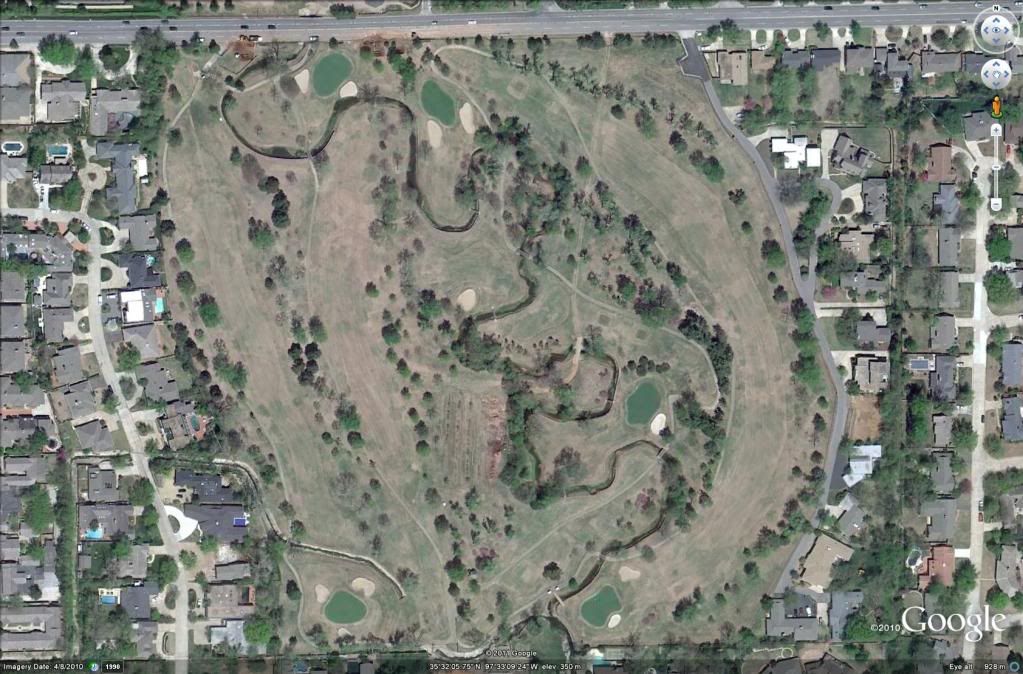
Maxwell managed to incorporate that creek in varying ways into every hole on this piece of the course. On the 10th, it is a crossing hazard on the approach…

At 11, it catches your eye from the tee to avoid missing short right…


But you also don’t want to bail out left since it is over there too…
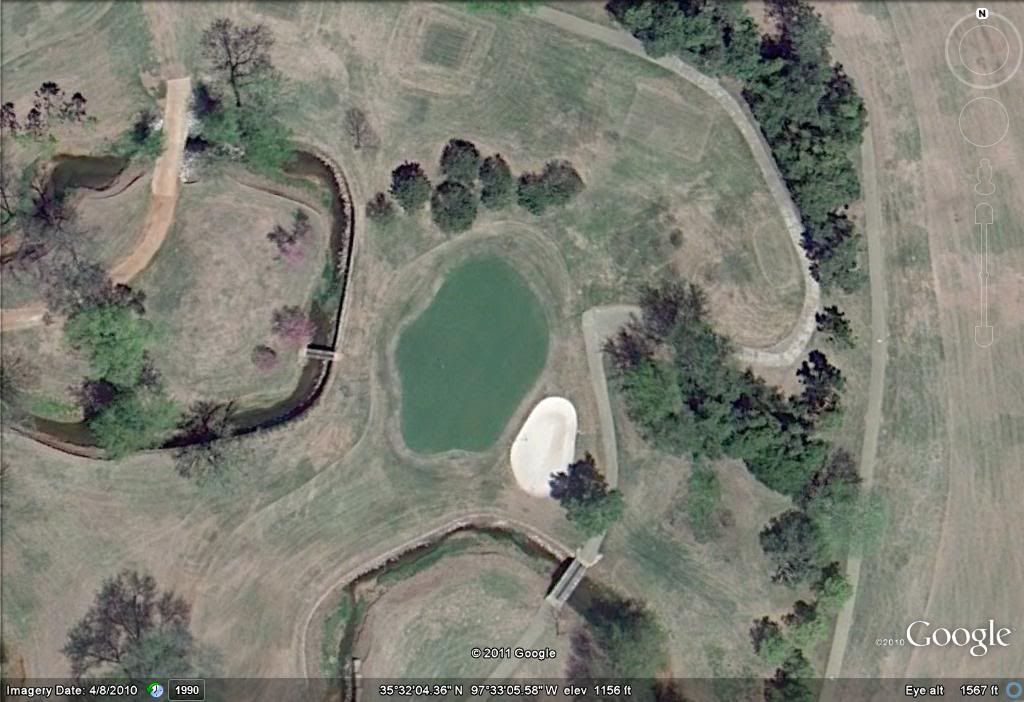
On the 12th, it must be carried off the tee…

…and then splits the fairway again past the dogleg, posing a real threat for those who want to be aggressive off the tee on this short par 4…

…and continues on to guard the left side of the green on the approach…

At 13, it wraps around behind the green to catch those who err long or right…

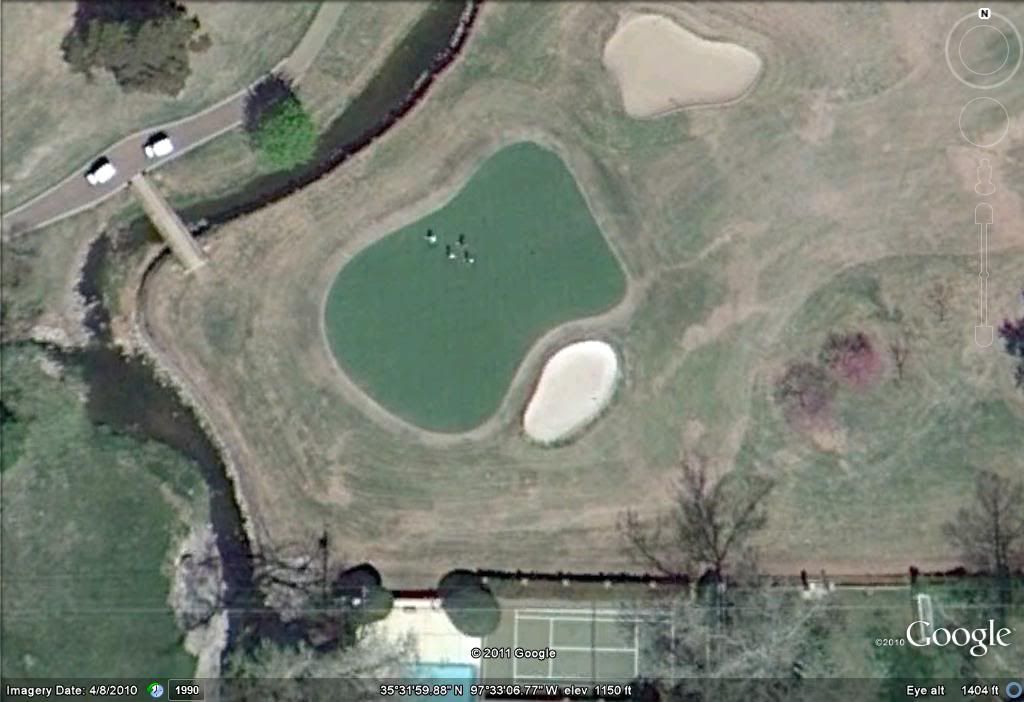
Finally, on 14 it guards the green on the approach…


Maxwell’s use of the creek at OKC is reminiscent of his work at Old Town, where the predominant natural feature is also a creek. At Old Town, Maxwell emphasized the creek to such a degree that he packed 3 tees and 3 greens (including a fabulous double green) into a parcel of less than two acres…
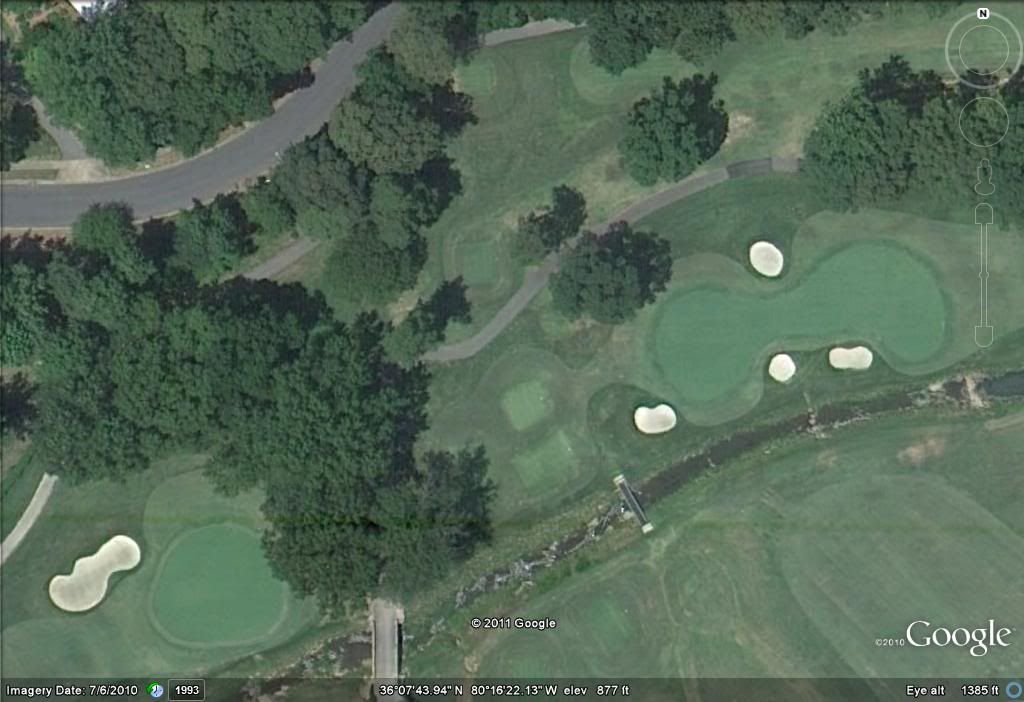
Then there is Dornick Hills. The “cliff” at Dornick Hills is a massive rock outcropping cutting through the back nine. While Maxwell utilizes the cliff as an elevated tee on both the 15th and 17th holes, it is the way he incorporates this feature into the 16th hole that is as bold of an architectural move as I have seen anywhere. How many architects would set the green on a risk/reward reachable par 5 on top of a 25 foot high natural rock wall? Maxwell did...

I can honestly say that going for the green in two on the 16th at Dornick Hills is one of the most exhilarating and memorable shots I have ever encountered. It is right up there with the approach on the 8th hole at Pebble Beach and the tee shot on the Road Hole at St. Andrews. Pulling it off and having an eagle putt is a stroke I will remember for the rest of my life. Is there a greater compliment that can be made to a course than it has a shot that is so indelibly etched in my mind that my adrenaline will start pumping every time I think about it? My only regret is that I did not fail to reach the green in two so that I could see what it is like to play this shot as a third…
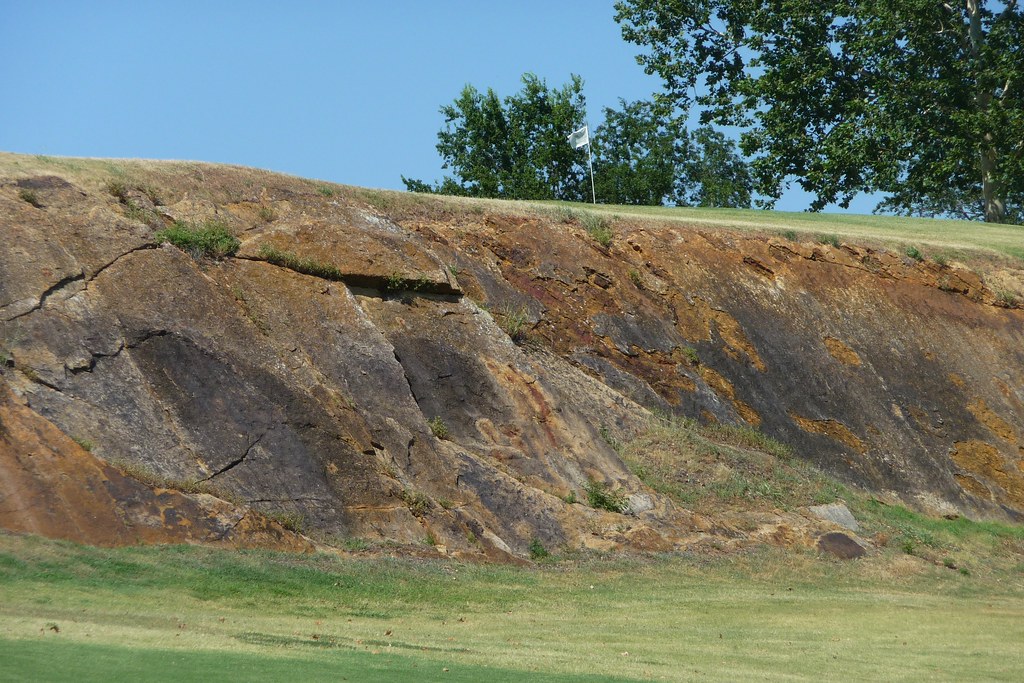
If I was limited to a single word to describe what I see in Maxwell’s routings, it would be “movement”. He liked him some dogleg for sure. But it’s more than that. Take the 3rd hole at Twin Hills in Oklahoma City for instance. From above, it looks pretty much like a straight hole…

However, the view from the tee tells a different story. Not only is this hole substantially uphill, it also subtly weaves its way right, then left and then back to the right again…

But that’s not all. The fairway heaves back and forth all the way from tee to green…


When you add it all up, you have a largely straight hole that actually moves in 3-D. The net effect is a constant sense of motion. While the 3rd at Twin Hills is admittedly an extreme example of this trait, I see the same quality in Maxwell’s other work. Maybe that is to be expected given Maxwell’s lay of the land philosophy.
Now I’ve seen commentary suggesting similarities between Maxwell and Ross since they both commonly designed holes with elevated tees and greens. I can understand that analogy. However, I also see similarities to Flynn in the way they both utilized canted fairways. For example, the 7th hole at Dornick Hills…

…the 6th hole at Twin Hills…

…#10 at Southern Hills…

…and #9 at Old Town…

I’m no Flynnoholic, but these holes seem to resemble what I’ve seen at Huntingdon Valley and Cascades. I know Maxwell worked some in the Philly area. I’d be curious if anyone knows whether there is any connection/influence between Maxwell and Flynn.
I have read that Maxwell was a fan of CBM and incorporated template concepts into his designs. While I don’t see templates holes in the CBM vein, I do see certain features that keep popping up. One of the most common is a tee shot over a rise to a blind fairway. Maxwell must have loved this shot since he did it too many instances to count. But a few examples are
#10 at OKG&CC…

#7 at Southern Hills…

the 4th hole at Oakwood…

#16 at Twin Hills…

the 13th at Dornick Hills…

and the 10th at Old Town…
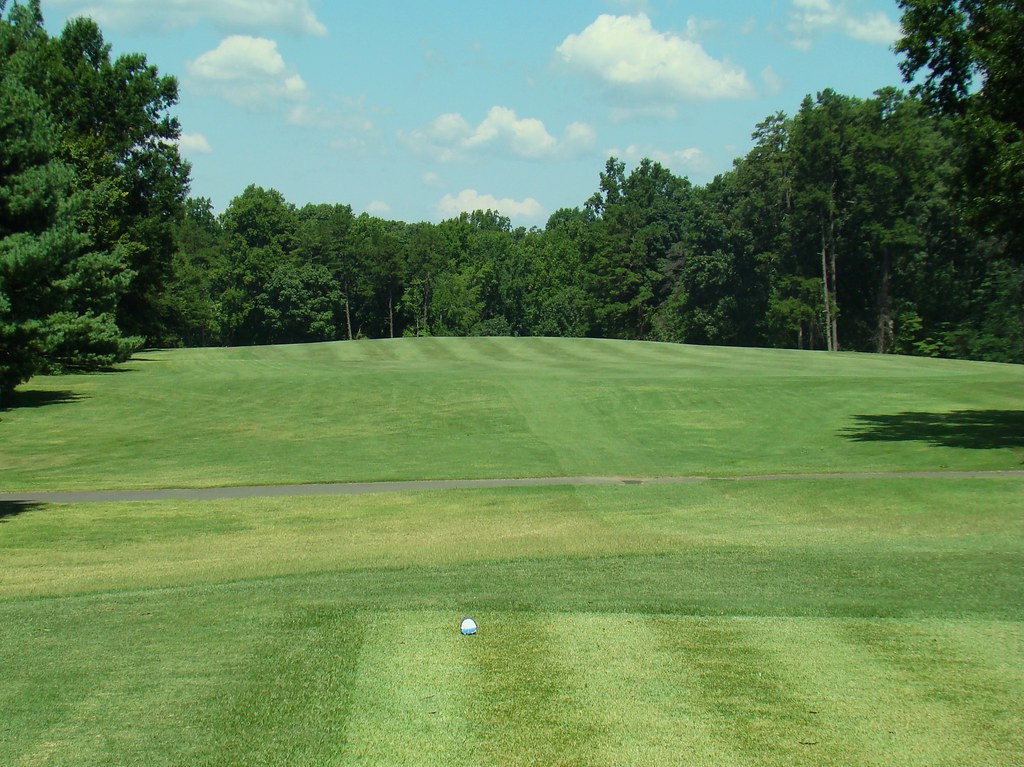
Another noticeable trait is the remarkable scarcity of fairway bunkers. At Twin Hills, there are only 4 holes with fairway bunkers. Ditto for OKCG&CC. At Dornick Hills, there are only 2 holes with fairway bunkers. And at Oakwood, there are only 2 fairway bunkers on the ENTIRE COURSE. Even Southern Hills has 6 holes with no fairway bunkers, which I suspect is comparatively low for a major championship site. And I’d be willing to bet that many of the fairway bunkers that do exist at Southern Hills were added as part of subsequent renovations to prepare the course for those championships.
Interestingly, the paucity of fairway bunkers does not, in my opinion, diminish the strategic character of Maxwell’s designs. Rather, in lieu of bunkers, Maxwell uses other methods to create the interest. Like the 16th at Twin Hills, where he uses the rolling contour of the land...


…or striking natural features like the cliff at Dornick Hills #16 (sorry, I can’t get enough of this hole)…

… or a unique hole routing like the horseshoe 13th at Oklahoma City…

I actually chose those three holes as examples because they are all par fives. One would think that designing par fives with no fairway bunkers affecting either the tee shot or the second shot would be a recipe for gruel architecture. But that’s not case with these holes and many others Maxwell designed without fairway bunkers. Not to go all Sean Arble on everyone, but it’s a nice lesson learned that you don’t need to have a lot of fairway bunkers to create interesting, strategic golf holes.
Of course, Maxwell is known for his greens. Although you hear about the “Maxwell rolls”, it would be a mistake to assume that all of his greens are boldly contoured. More than anything else, they exhibit tremendous variety, ranging from subtle…

…to wild...

Tiered…

…, with spines…

…, ridges…

…and humps and bumps…

At grade…

…and push up…

Back to front…

…and front to back...

Importantly, that variety isn’t just from one course to another. It is within each individual course too. There is a fine line between inconsistency and variety. We’ve all played courses where one or two greens stand out as being different from the rest. Sometimes that is just as much of an indictment against the greens that “fit” as it is against those that appear out of place (i.e., the reason a few greens stick out is because the rest of the greens are too similar). From my perch, that is inconsistent architecture. On the other hand, when greens lack uniformity to such a degree that none stand out as unusually out of place with the others, that’s a sign of variety. Maxwell’s greens walk that line and achieve variety without crossing over into inconsistency.
I’ve lived in Charlotte for a long time now. One of the things I love most about golf in North Carolina is the imprint Ross has left throughout the state. Drop me anywhere in the state and I’ll bet I can find a Ross design not more than 30 minutes away. Maxwell has a similar lasting legacy in the Southwest. His designs dot the landscape here and there throughout the region. More importantly, his courses are solid start to finish, chock full of interesting holes and loads of fun to play. I’m not saying they are without flaws or that I put Maxwell at the top of the ODG food chain. But it’s good stuff any way you slice it and I feel very fortunate to have had the opportunity to sample such a broad range of his work. The best part of Maxwellpalooza, however, was sharing the final round at OKCG&CC with my Dad. His health has not been particularly good in recent years. He can’t play anymore, but he was able to ride around in the cart with me. This is the smile of a man feeling the joy of being on a golf course for the first time in 8 years…

Thanks for the indulgence!